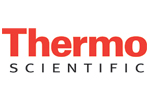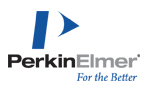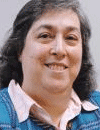08:00 |  Free Workshop Free Workshop
PCR without DNA purification – Thermo Scientific Direct PCR
|
|
Session: Protein Chemisty and Crystallisation Continued |
| |
09:30 | Xaperone Assisted X-ray Crystallography: Turning on a G-protein-Coupled Receptor
Jan Steyaert, Group Leader/Director, Vrije Universiteit Brussels, Belgium
Nanobodies that faithfully mimic the effects of G protein binding were used to obtain diffraction quality crystals and to solve the first structure of an active agonist-bound state of the human ß2 adrenergic receptor. |
10:00 | Improving Protein Crystallography with Acoustics for Crystallization Screening, Solution Quality Monitoring and Crystal Transfer
Richard Ellson, Chief Technology Officer, Labcyte Inc, United States of America
Focused acoustics can transfer liquids and suspensions as well determine the quality and volume of crystallization solutions. Examples of protein crystallography work flows using acoustics will demonstrate miniaturization of screens, flexibility, and quality for a range of protein crystallography applications. |
10:30 | Coffee Break and Networking in Main Exhibition Hall |
|
Session: Crystallography and Crystallographic Computing |
| |
11:15 | Lessons of Diffraction Resolution and how the Structures of the Various Crustacyanins have been Solved
Michele Cianci, Reseaerch Scientist, EMBL , Germany
The coloration of the lobster shell derives from astaxanthin molecules with proteins in complex with apocrustacyanin A1 solved using softer X-rays, and refined at 1.4Å resolution, and the b-crustacyanin dimer complex at 3.2Å resolution. The a-crustacyanin complex of eight b-crustacyanins has been studied by EM and SAXS at 30Å resolution. Several relevant carotenoids have been investigated by chemical crystallography at 0.8Å resolution, and their colours in solution and the crystalline state also determined. |
11:45 | The wwPDB Common Deposition and Annotation Tool : how Deposition at the wwPDB will Change
Thomas Oldfield, Team Leader, European Bioinformatics Institute, United Kingdom
The Worldwide Protein Data Bank (wwPDB) common deposition and annotator project will release a common deposition tool at all wwPDB partners sites at the beginning of 2012. This tool will significantly change the process of deposition of macromolecular structure data for the scientific community and this talk will present the salient points for the depositor. |
12:15 | Lunch and Networking in Main Exhibition Hall |
12:45 |  Free Workshop Free Workshop
Glosensor Technology: Intracellular Biosensors to Detect Signal Transduction in Living Cells
|
13:15 | Poster Presentations |
13:30 |  Free Workshop Free Workshop
Automatic High Content Screening for Life Sciences
|
14:15 | The Collaborative Computational Project Number 4 (CCP4) - Towards New Challenges in Crystallographic Computing.
Eugene Krissinel, Core Group Leader, CCP4, United Kingdom
CCP4 is a community based resource in Protein Crystallography with ultimate goals to play a key role in the development of new crystallographic software for academic, not for profit, and for profit research, as well as in education and training of scientists, dissemination of new ideas, techniques and practice. In this talk, the current state of the Suite, new developments and new challenges arising will be discussed. |
14:45 | Using Experimental Data Directly in Structure Solution
Navraj Pannu, Assistant Professor, Leiden University, Netherlands
A multivariate likelihood function applied to the different steps of experimental phasing leads to solutions when current methods fail. |
15:15 | Coffee Break and Networking in Main Exhibition Hall |
|
Session: New Laboratory Instrumentation |
| |
16:00 | Facilities for Macromolecular Crystallography at BESSY-II
Manfred Weiss, Team Leader, Helmholtz-Zentrum Berlin, Germany
The Macromolecular Crystallography (MX) group at the Helmholtz-Zentrum Berlin (HZB) is operating three state-of-the-art beam lines for MX, which currently represent the most productive MX-stations in Germany. BL14.1 and 14.2 are energy tunable , while BL14.3 is a fixed-energy side station (13.8 keV). In the presentation, the beam line instrumentation as well as the available ancillary facilities will be presented and an overview of the experimental possibilities, which are possible, will be given. |
16:30 | EMBL@PETRA3. An Integrated Facility for Structural Biology
Thomas Schneider, Group Leader, European Molecular Biology Laboratory, Germany
EMBL is constructing an integrated facility for structural biology at the high-brilliance synchrotron PETRA III at DESY in Hamburg. Three beamlines for small angle X-ray scattering and X-ray diffraction will be operated together with on-site facilities for sample preparation and characterization and data evaluation. |
17:00 | Close of Conference |





